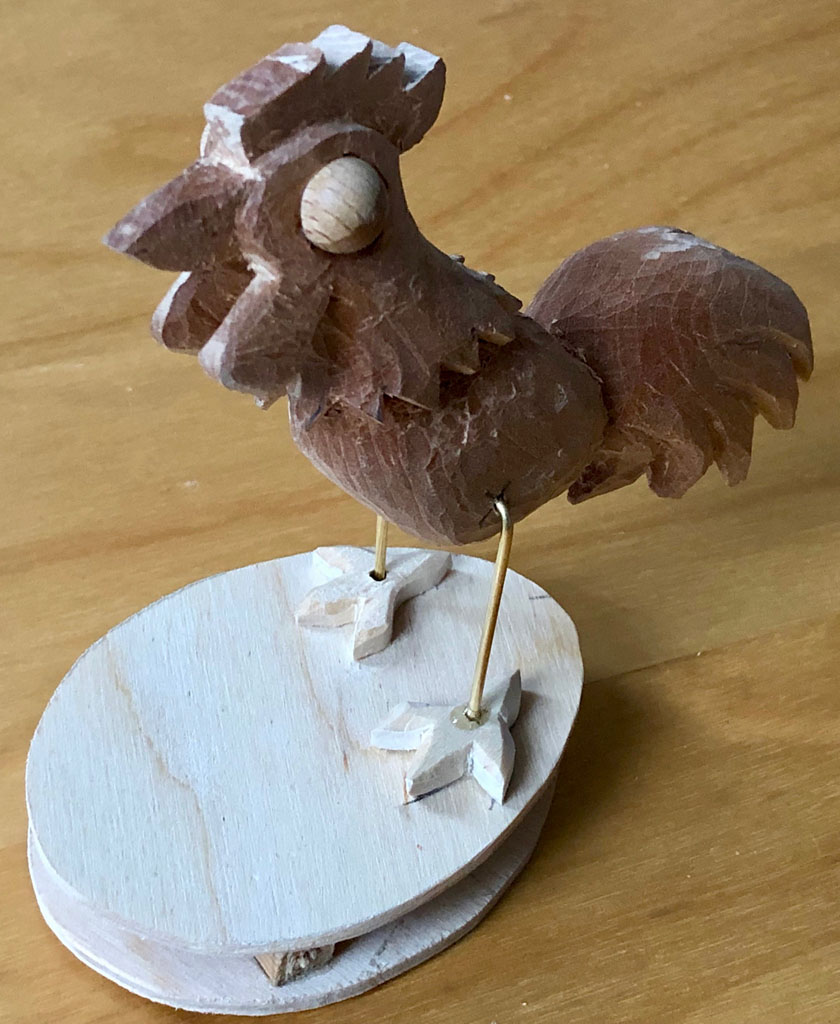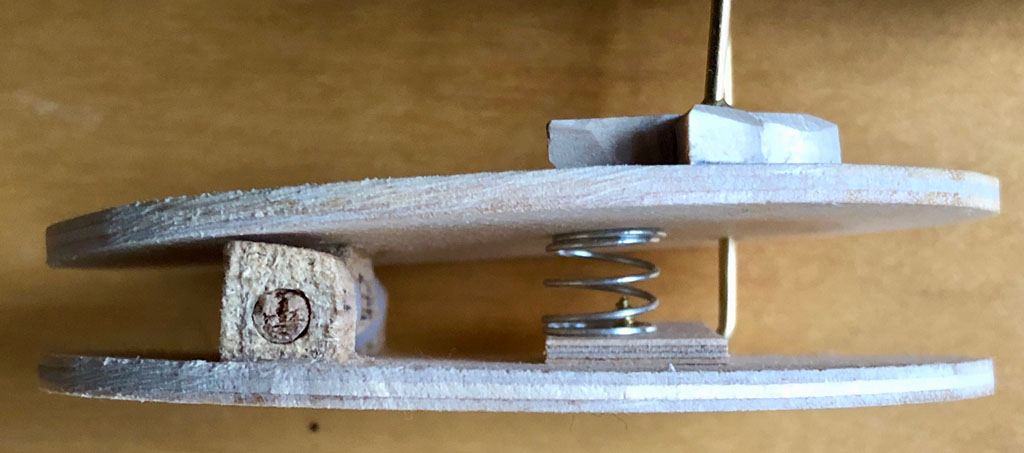The latest product from Berlin’s booming startup scene, a touch-sensitive smart chicken! An extremely low maintenance cockerel which operates on just the environmentally friendly pressure of one finger. No feed or batteries required and guaranteed free from electromagnetic emissions and all unpleasant odours.
What does this cock a doodle do? Eternally patient it pecks away at its state of the art miniature smartphone. Dreadful anti-avian discrimination by the developers mean that every attempt with his beak is bleak. With feathers but no fingers this bird of little brain will forever be barred from crowing onto the Internet, which is probably no bad thing.
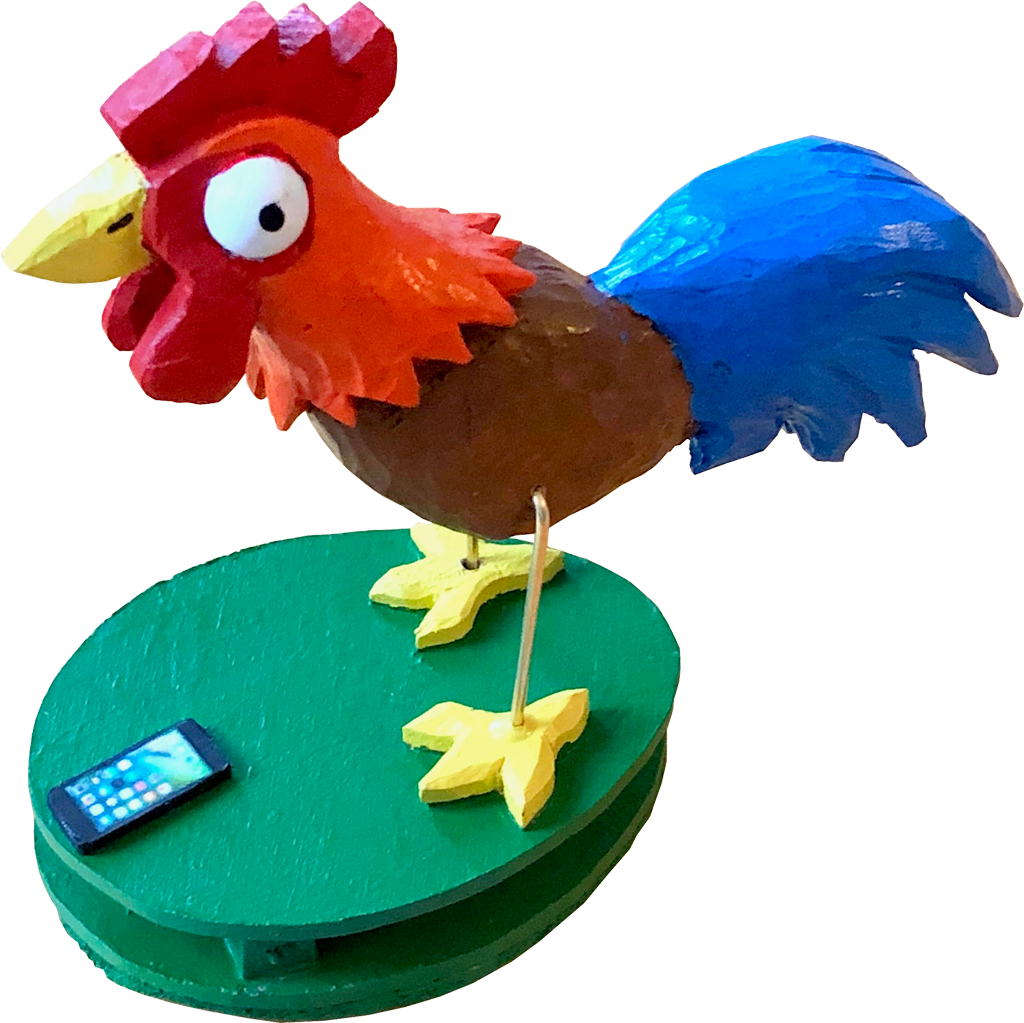
Design
I was inspired by a number of clothes peg automata, starting with a beautiful bird by the amazing Martin Lhotak (which you can see here https://www.youtube.com/watch?v=mkBWAJ83Yv0 ). It’s quite a simple mechanism where squeezing against a spring causes two parts to move relative to one another. Clothes pegs are fine if you want to clip your creation to something, but are not so good if you want it to stand on a surface. I went for an egg shape as it’s a chicken. In this case the chicken came first and then the eggs!
How to make it
Draw a chicken without any legs and then cut out that shape on a piece of card. Draw an egg, or pinch an egg from hyperspace if you are geometrically challenged like me. Cut it out on a piece of card. These are the templates to mark a piece of lime wood for the body and two pieces of thin plywood for the egg-shaped base.
Scroll cut two egg shapes in thin plywood.
Make a wooden hinge to go towards the fat end of the eggs, located between the two eggs. This is three bits of roughly 10 mm x 10 mm strip with a hole drilled through the middle to take a piece of dowel. I added a couple of plastic washers which are probably not necessary as the rotation of the hinge is minimal and friction is not too important. You will however have to round the correct corners of all 3 pieces to allow enough rotation to get the cockerel pecking properly.
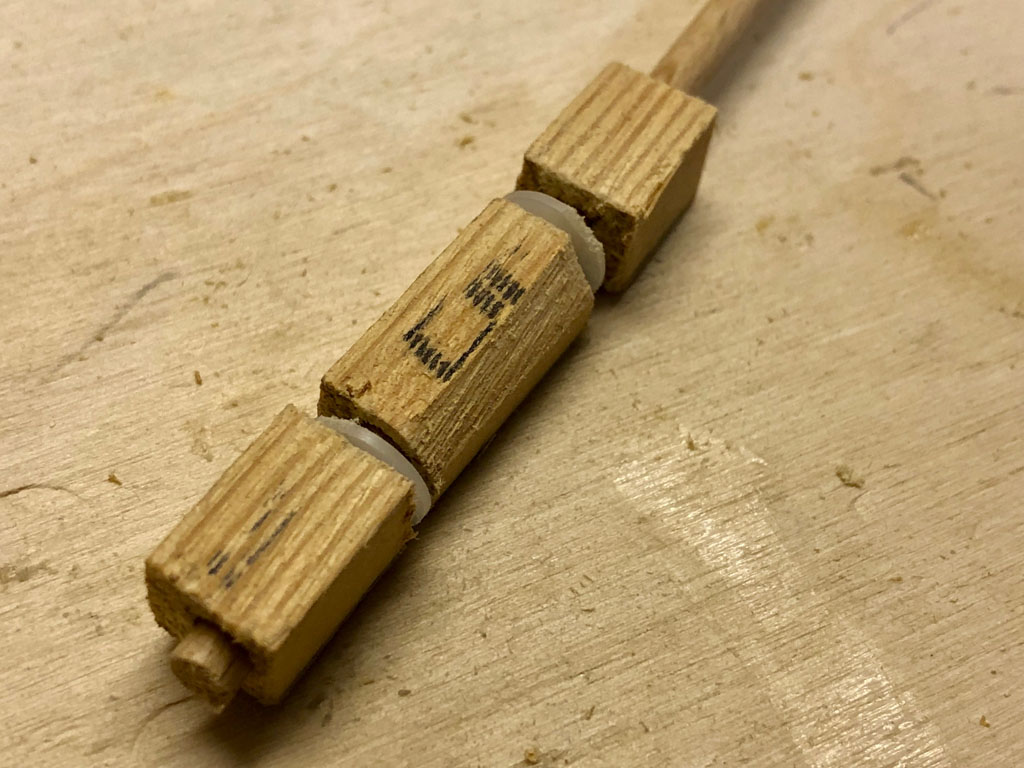
Carve the body to make it look like a cockerel. I glued on small ready-made hemispheres for the eyes for a nice popeye look.
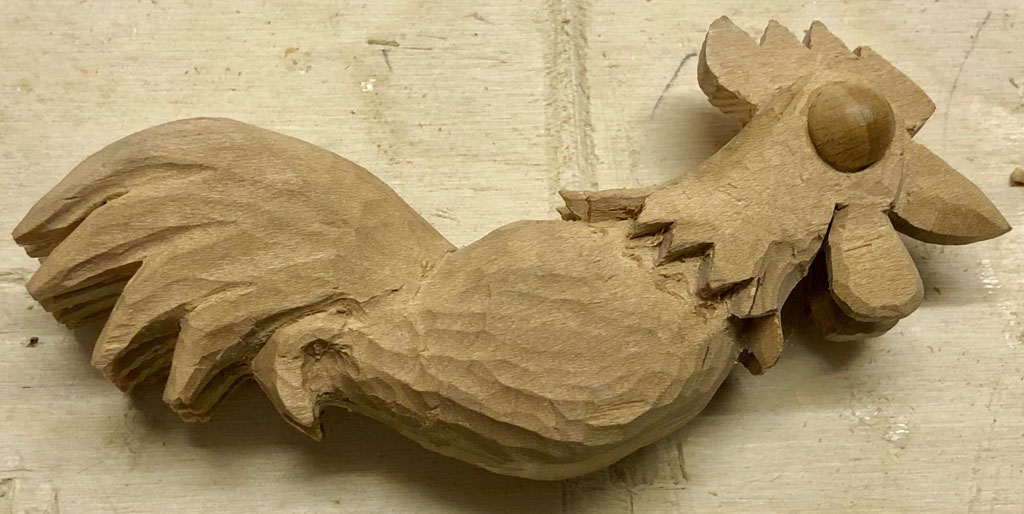
Make two feet. Note that the chicken’s left foot is a tight fit for its brass leg and its right foot allows its brass leg to move freely.
The holes in the side of the body are at the same height but the hole in the right side is about 5 mm further back. This offset means that when the right leg is pushed up relative to the left leg, it makes the body tilt forward and our cockerel starts pecking away. Between the two eggs, the right leg is fixed to the bottom egg.
A spiral spring between the eggs pushes them apart and keeps the chicken upright.
As you can see, the spring pushed the eggs a bit too far apart, so I glued in another piece of 10 mm x 10 mm (not shown) in front of the hinge to correct that.
A very small piece of plywood serves as the smartphone. As it was too small for me to paint, I printed out a small image of a phone and glued it on.


